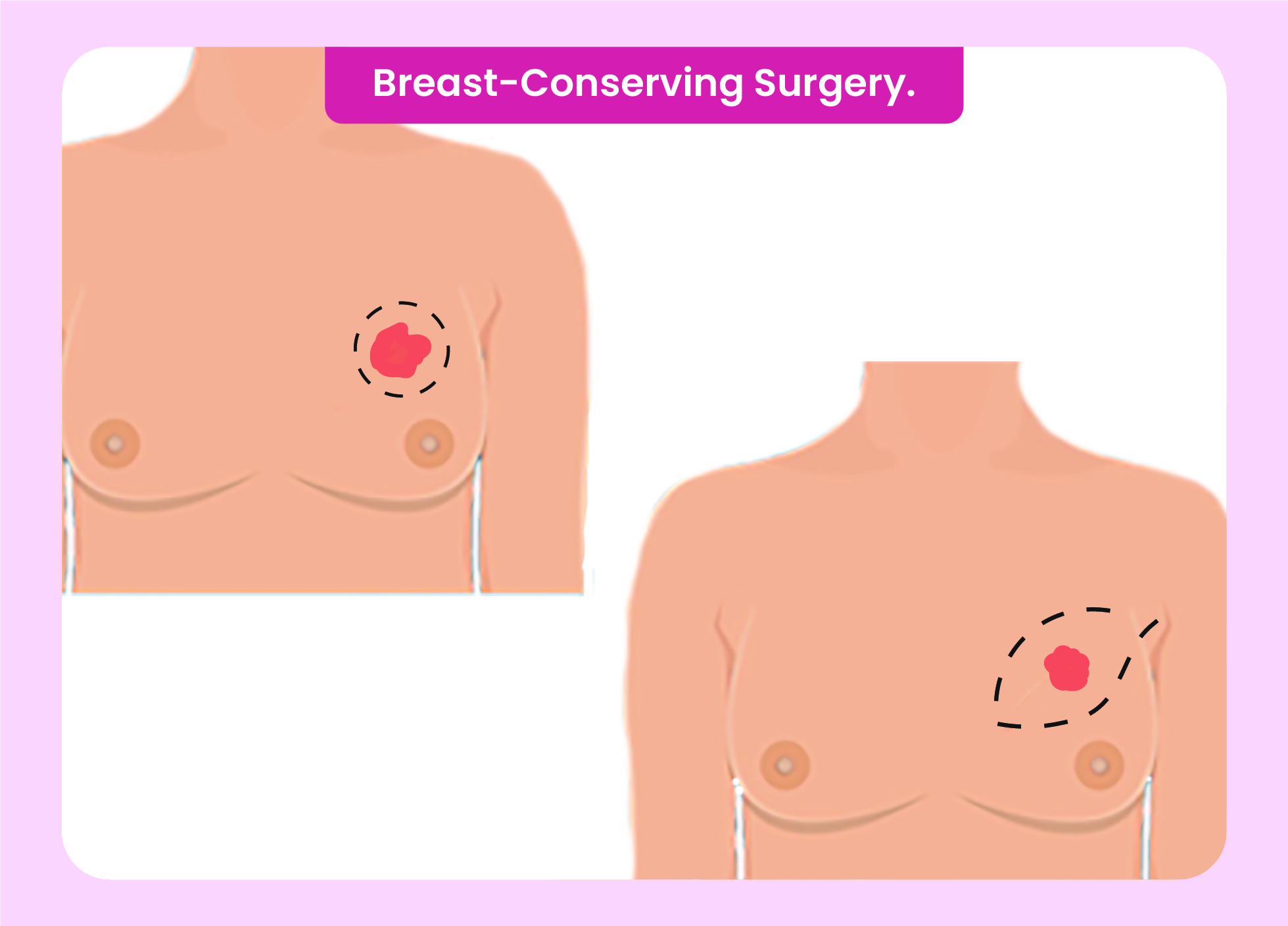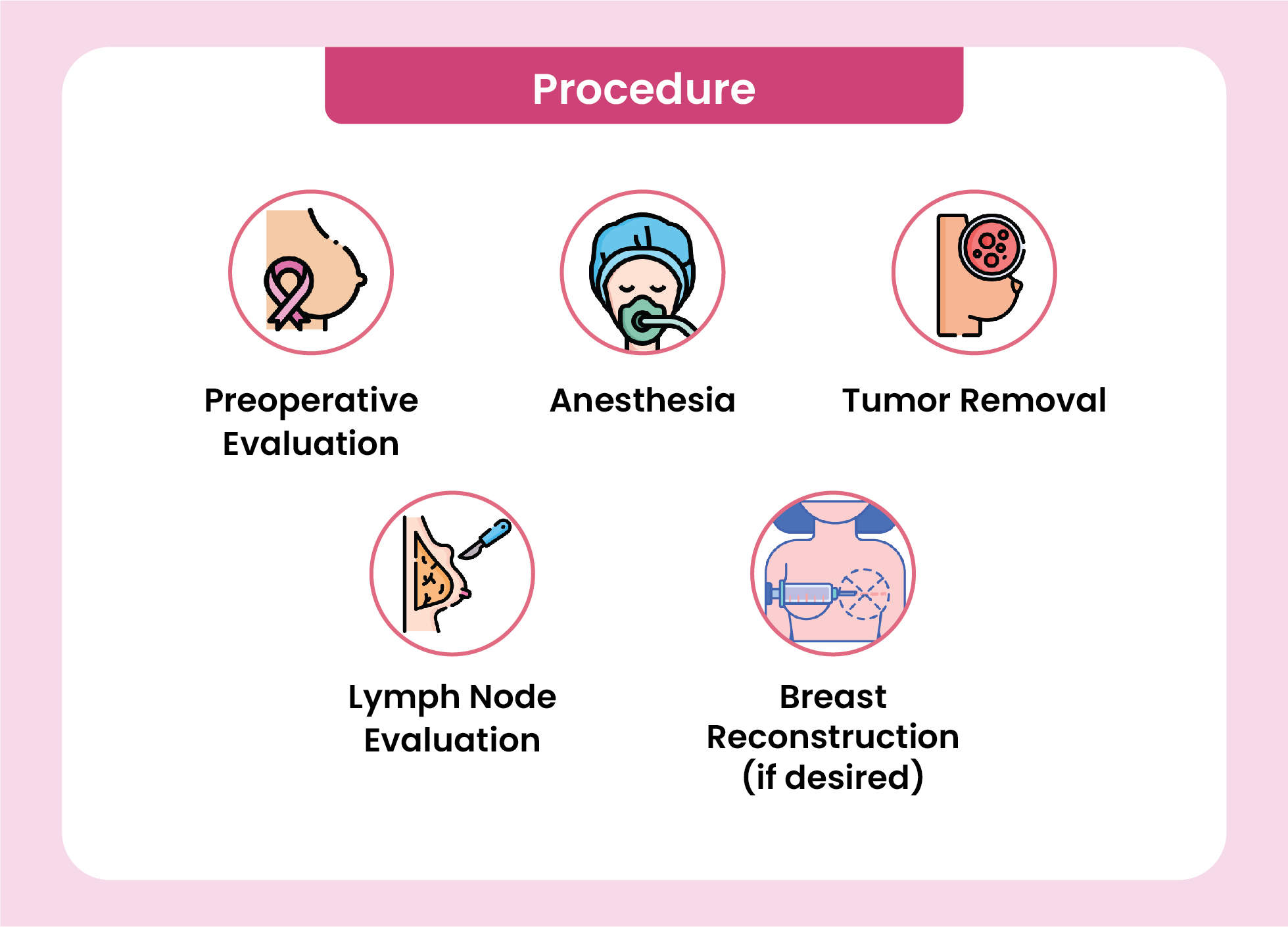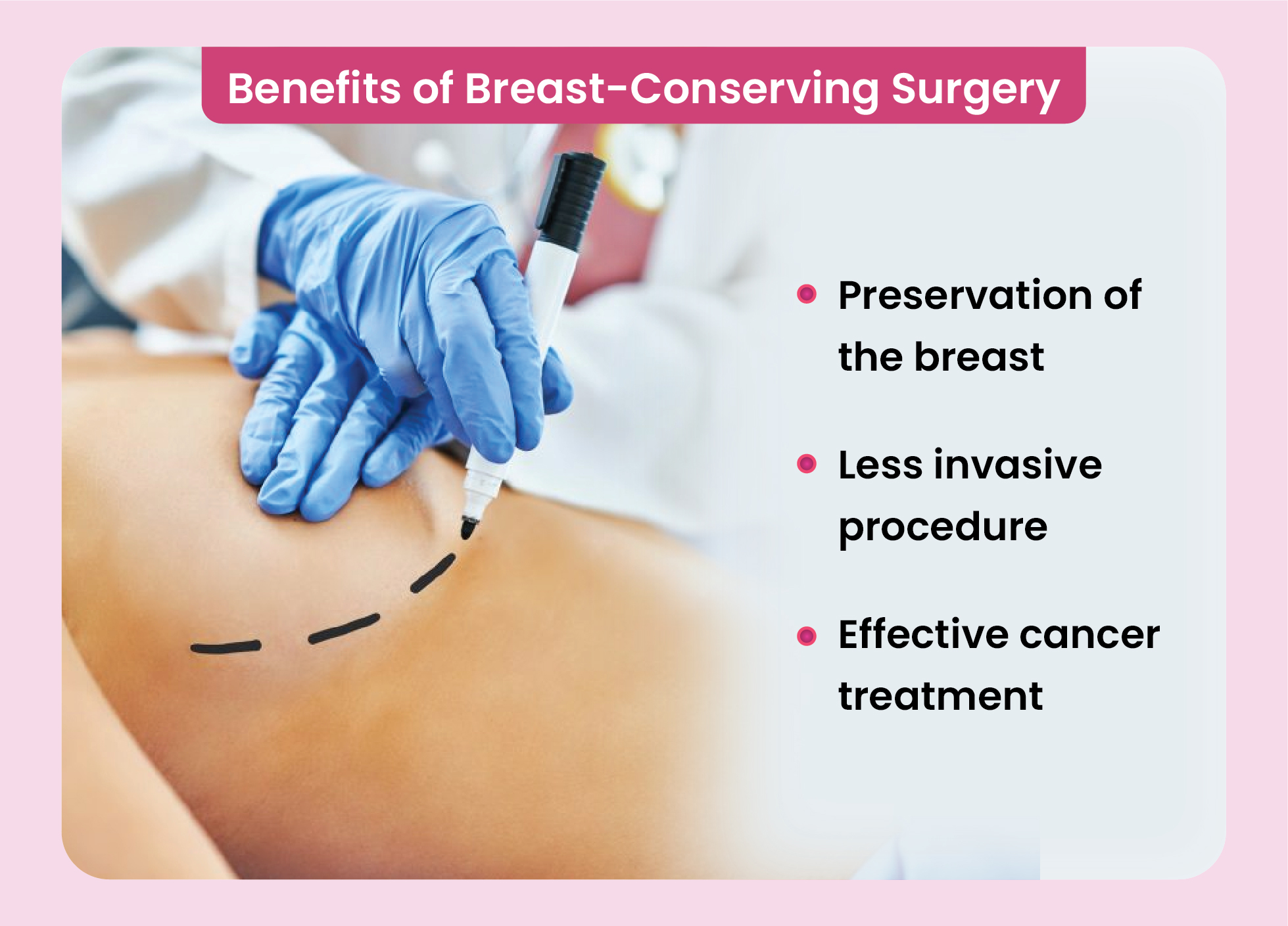Breast-conserving surgery, also known as breast-conserving therapy or lumpectomy, is a surgical procedure that aims to remove cancerous or abnormal tissue from the breast while preserving the natural shape and appearance of the breast. It is an effective treatment option for early-stage breast cancer and offers several advantages over more extensive surgeries like mastectomy.
Through blood vessels and lymph vessels, breast cancer can potentially spread
to other bodily areas. It is referred to as metastasis when it spreads.
Breast-conserving surgery is typically suitable for individuals with early-stage breast cancer (stage 0 to stage II) where the tumor is relatively small and confined to a specific area. The decision on whether to undergo breast-conserving surgery or a mastectomy depends on various factors, including the size and location of the tumor, the breast size, the individual's overall health, and personal preferences.


Preoperative Evaluation: Before the surgery, you will undergo various tests, including mammography, ultrasound, and possibly an MRI, to accurately locate and assess the tumor. These tests help the surgeon plan the surgery and determine the extent of tissue removal required.
Anesthesia: Breast-conserving surgery is performed under general anesthesia, which means you will be asleep and pain-free throughout the procedure.
Tumor Removal: The surgeon will make a small incision near the tumor site. Using specialized surgical instruments, they will carefully remove the tumor along with a surrounding margin of healthy tissue. The removed tissue will be sent to the lab for analysis to ensure complete removal of the cancer.
Lymph Node Evaluation: In some cases, the surgeon may also perform a sentinel lymph node biopsy during the surgery. This involves removing a few lymph nodes near the breast to determine if cancer has spread beyond the breast.
Breast Reconstruction (if desired): Following the tumor removal, the surgeon may discuss options for breast reconstruction to restore symmetry and enhance the appearance of the breast. This can be done during the same surgery or in a separate procedure.
After breast-conserving surgery, you will typically spend a few hours in the recovery area before being discharged. The recovery
time varies for each individual, but most people can resume their normal activities within a few days to a week. It is common to experience
some temporary soreness, swelling, and bruising, which can be managed with prescribed pain medications.
After surgery, you will be scheduled for regular follow-up visits with your oncologist and surgeon to monitor your recovery and discuss
any further treatment options, such as radiation
therapy or adjuvant chemotherapy, if necessary.
Preservation of the breast: Breast-conserving surgery allows women to maintain their breasts, which can positively impact body image and self-esteem.
Less invasive procedure: Compared to mastectomy, breast-conserving surgery involves a smaller incision and typically leads to a faster recovery time.
Effective cancer treatment: Numerous studies have shown that breast-conserving surgery, when combined with radiation therapy, provides outcomes comparable to mastectomy in terms of long-term survival rates.
